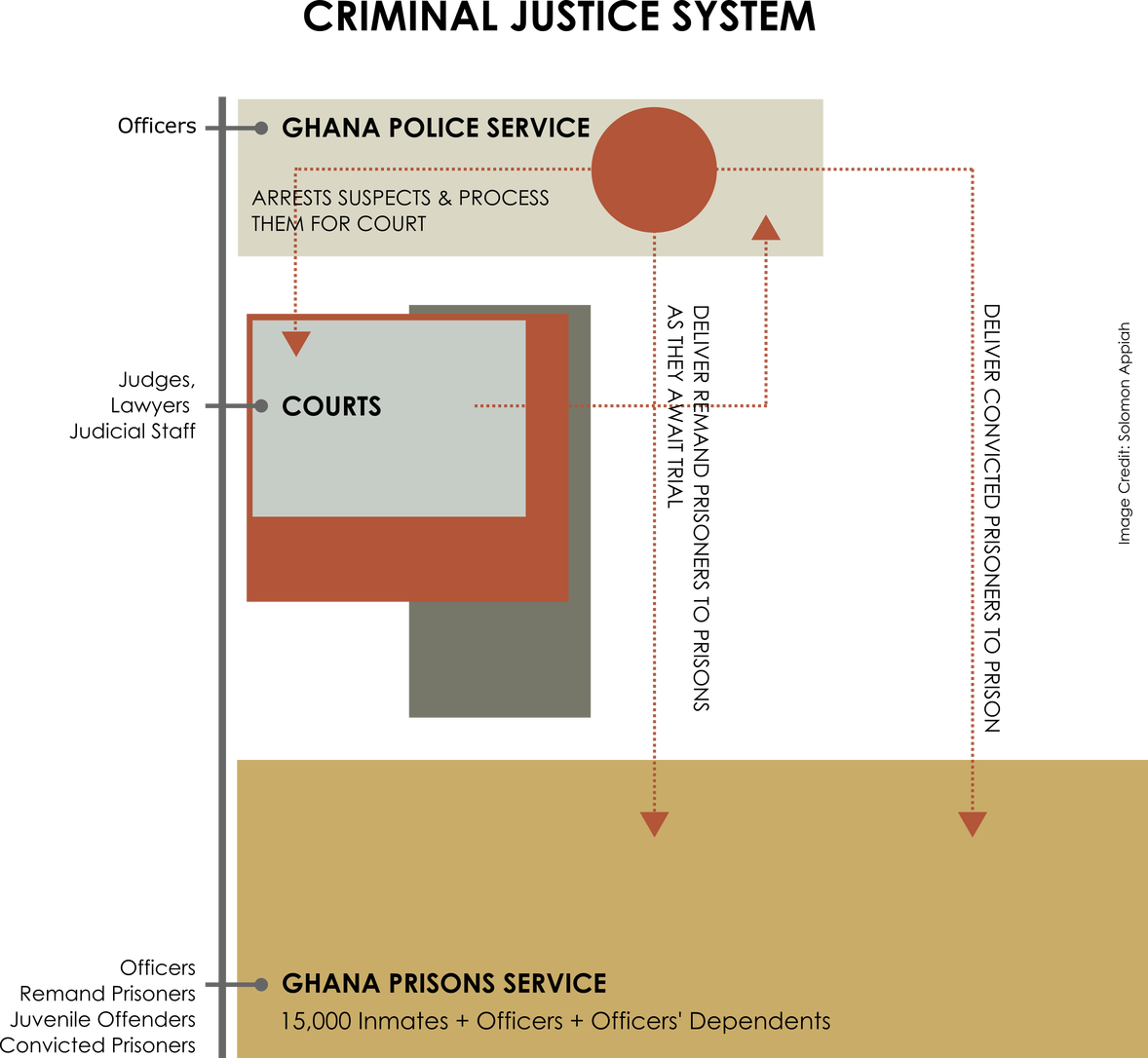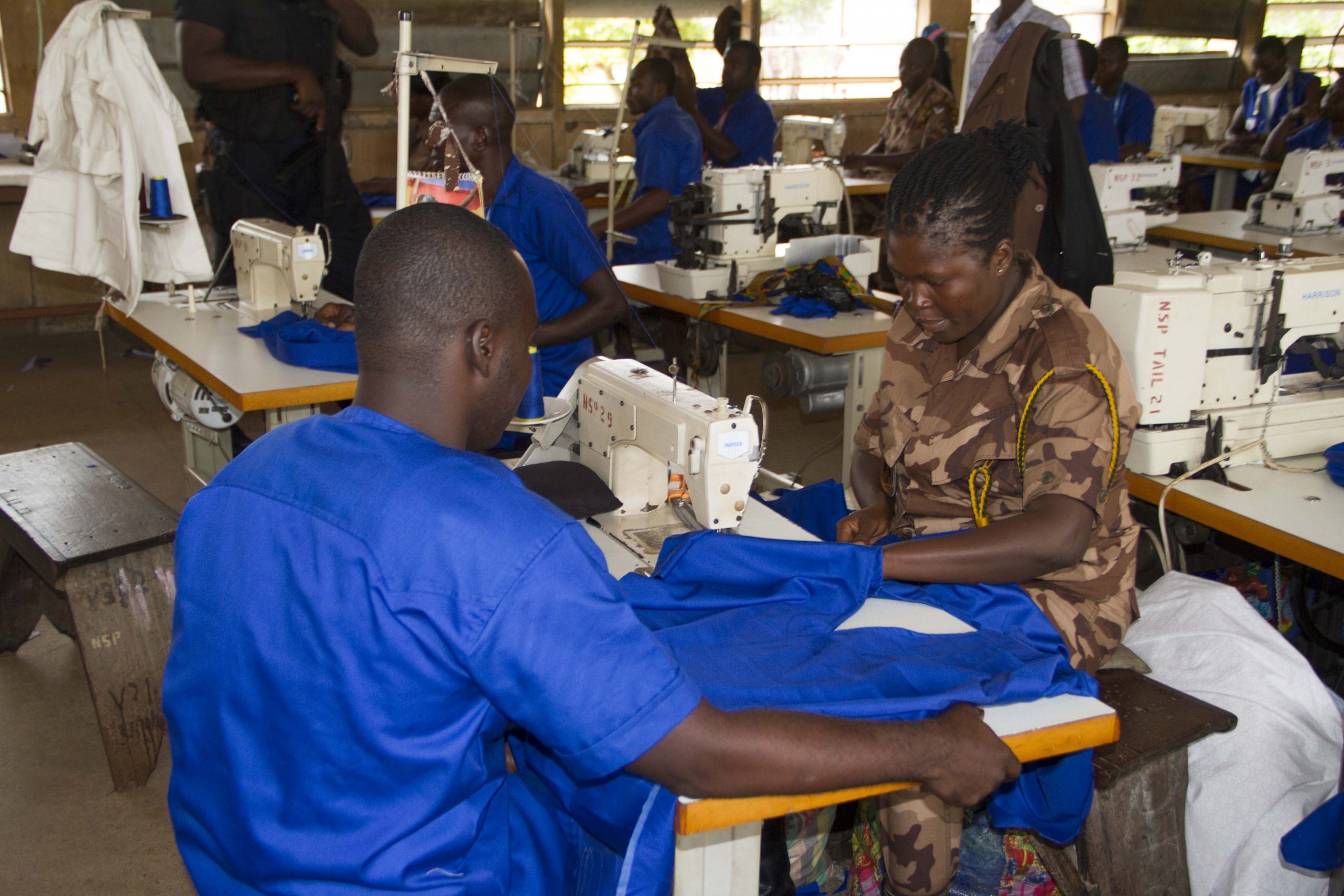Originally posted on July 5, 2015 by Solomon Appiah
The challenges facing the Prisons Service are varied. Many are interlinked and will require money to solve. Fortunately for the present Prisons Council, its predecessors and the Prisons Service Directorate have done a good job of identifying these challenges and going a step further to come up with a 10-year Strategic Development Plan to resolve them. In a spirit of continuity, the present Prisons Service Council under the Chairmanship of Rev. Dr. Stephen Wengam has taken upon itself the task to help fund the implementation of the 10-year Strategic Development Plan. To do this, the Council launched Project Efiase on June 30, 2015 at the College of Physicians and Surgeons.
Project Efiase is an advocacy drive showing Ghanaians the plight of the prisoners and officers. It is also an invitation to the corporate world that Ghana’s prisons are willing to engage in public private partnerships. It is also a fundraiser targeting ordinary Ghanaians and corporate Ghana soliciting their assistance in the transformation of Ghana’s prisons. But why should ordinary Ghanaians help? What do they stand to benefit by supporting Project Efiase? Are our prisons not government’s responsibility? What is it doing about the challenges facing prisons?

This article will address these questions and more but first let us address the following. Why do we imprison people in the first place and what type of persons end up in Ghana’s prisons?
Why do countries imprison people?
A nation can rise or fall based on the state of its prisons system.
People are sentenced to prison for four basic reasons according to Connie Clem. The first is incapacitation which is “the concept that putting an offender in a secure facility prevents him/her from victimizing the public again”. The second is deterrence which refers to “the concept that knowing that someone else was punished for a crime will make another person less likely to commit the same crime”. The third reason why we imprison people is retribution and refers to the “concept that an offender who serves time is paying society back for the harm done in the crime”. The fourth and final reason is rehabilitation which refers to “the concept of providing treatment (such as addiction treatment) and programs (such as education and job skills training) to boost the likelihood that an inmate will not return to crime when he or she is released back to the community”.
Rehabilitation has the highest usefulness to society. It treats and reorients the offender in such a way that it reduces the likelihood of them returning to a life of crime when released. In Ghana though, we have a history since colonial times of funding anything but rehabilitation. The system and limitations of physical structures are such that it makes treatment via rehabilitation difficult.
Rehabilitation though initially costly financially speaking, is in the long run cheaper financially and socially—and much safer for society at large. The other 3 only serve to further harden convicts who invariably return to a life of crime after being released. These folks feel they have nothing to lose so they are usually more dangerous when they re-offend. Furthermore, when ex-convicts reoffend, the state will again have to bear the burden of their feeding, clothing and housing. It is therefore in society’s best interest to shift from funding solely retribution to funding reform and rehabilitation.
Who ends up in Ghana’s prisons? The simple answer is anyone. It houses both convicts and people awaiting their day in court for crimes they may or may not have committed.

Why is it difficult to reform Prisoners in Ghana?
Lack of funding, poor infrastructure, lack of space, lack of tools for skills development implementation programs for prisoners, lack of training for officers, are all reasons why reformation and rehabilitation in Ghana’s prisons is difficult.
For starters, infrastructure is a huge challenge. The Prisons Service has 45 establishments or buildings—43 of which serve as prisons. Of the 43, only 3 were built for the purpose of serving as prisons by the Ghana government. Of the 3, one is still in the process of being constructed, that is Ghana’s only maximum-security prison. The other 40 were not originally built as prisons.
The Yeji Prison used to be an abandoned clinic. The Winneba Prison was formerly a warehouse of a business concern dating back to colonial times. The Koforidua Prison used to be an armory in colonial times. The Kumasi Prison was built in 1946. The Prisons at Kenyasi and Dua Yaw N’kwanta were given to the Prisons Service by the Ministry of Agriculture. The gift of land at Kenyasi came with a solitary structure which the Prisons Service had to secure and eventually expand to house prisoners. Some of Ghana’s prisons are even built of mud. The fact that many prisons were not originally built for this purpose is contributory to the acute congestion challenge in the prisons. The infrastructural deficit is a perennial challenge that spans various government Administrations all the way to independence era and limits successful classification and treatment programmes e.g. reformation and rehabilitation programmes.
Another reason why it is difficult to reform prisoners is lack of training and tools for officers. The machines in some of our prisons workshops which are supposed to be used to give inmates skills date back to the colonial era.
How about all the land that the Prisons Service has access to? Can they not be farmed and proceeds sold to generate funding for the Service? It’s a great idea however there are some hindrances to implementation.
Though the Prisons Service does have an Agricultural Division that does undertake farming activities in various locations around the country on about 1,000 acres of land combined, it has difficulty doing more than this for a number of reasons. Many of Ghana’s prisons are not in close proximity to the lands they could use for farming. Vehicles are needed to convey prisoners to these lands and back but the Prisons service currently suffers from a severe lack of vehicles. Even if the vehicles were available, prison officers at present are not given guns. With no firearms, it is not wise to take a bus load of prisoners to a wide acreage of land for farming. Farming on a large scale requires tractors and other farming machinery as well as irrigation equipment that reduces dependency on erratic rainfall. The Prisons Service is bereft of these. Assuming all the aforementioned challenges are met and the Prisons Service were able to farm thousands of acres and had a bumper harvest from its Agricultural endeavors, what would it do with surplus produce after selling some and using some to cook for inmates and officers and their families? The vast majority would probably rot. Another more nuanced challenge is feeding. At present, prisoners are fed on GHc1.80 for breakfast, lunch and supper. This includes the contractor’s profit margin. The kind of meal to be provided by such a sum is hardly energy giving enough to expect prisoners to work on large acreage of land.
Notwithstanding all the above mentioned limitations, the Prisons Service has done a commendable job of farming close to 1,000 acres.
Where is Government in all of this?
Are the prisons the responsibility of government? The answer is YES! Does government assist the work of the Prisons Service? The answer is YES again. How so?
First of all, the monies used to take care of the entire Prisons Service and inmates come entirely from government coffers.
Not too long ago, the feeding rate given by government to the service to feed inmates was GHc0.60. The present government administration has tripled the feeding rate of inmates.
Government through GETFund has provided for the building of school blocks for inmates interested in the SSCE examinations. The Wa block is complete while the one at Nsawam is 85 percent complete. Last year the inmates who sat for SSCE had a 100 percent pass rate. They sat for these exams under the Centre for National Distance Learning and Open Schooling (CENDLOS) an initiative of government which provides learning opportunities to increase access to education at all levels.
Government has provided ICT Centres in all the Central Prisons in Ghana for inmates to upgrade their ICT skills. Government through National Security donated money for the Bawku prison. There are plans to build a new prison at Bolgatanga. Through a collaboration with the Ghana government, the British High Commission gave a grant of GBP485,000 to the Ghana Prisons Service. Some of this grant has been used to buy two buses, renovate parts of the Nsawam Medium Security Prison as well as refurbish a building into a court near the Nsawam prison facility.
What else is government doing? The 1992 Constitution states that there should be a parole system which up until now has not been implemented. The current government administration is working on doing this as well as working on the possibility of introducing non-custodial sentencing as part of our legal system. This will go a long way to reducing the congestion in the prisons. The Government is also reviewing the Prisons Act.
Furthermore, the President has pledged his support for Project Efiase, an initiative of the Prisons Council. He has promised to top up whatever amount of money is raised via this project.
He has also promised to visit the prisons with the Council—making him the first sitting president to do so—to acclimatize himself with the conditions firsthand.
In summary, the government is working to improve conditions in Ghana’s prisons but the challenges span different administrations and have accumulated sine colonial times. Government alone cannot solve all the perennial challenges of the Prisons Service hence the need for Project Efiase.
Project Efiase is a fund raising project—the Prisons Service Council’s outreach to ordinary Ghanaians to assist with making Ghana’s prisons centers for reformation, rehabilitation and productivity—not just incapacitation, deterrence and retribution.
Government is doing is part. Efiase is a call to the ordinary Ghanaian and corporate Ghana to also support this national security agency that forms such a significant part of Ghana’s Criminal Justice System.
The population of Ghana is estimated to be about 24 million people. Assuming 18 million of us decided to give GHc1 per month towards Project Efiase, that would still be insufficient to meet the total infrastructural, transportation, health, feeding and skills training needs of the Prisons Service but it would be a good starting point.
Together, let’s move from purely deterrence, incapacitation and retribution to reformation and rehabilitation. The latter will lead to a safer, more prosperous Ghana.




